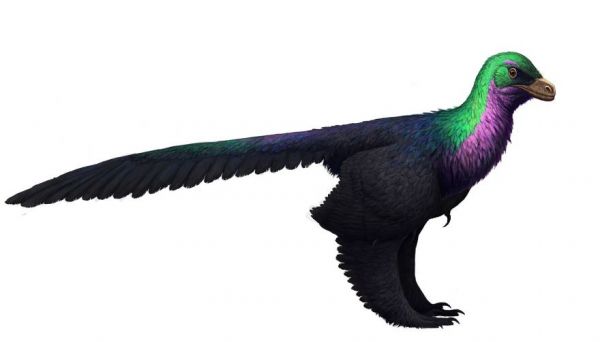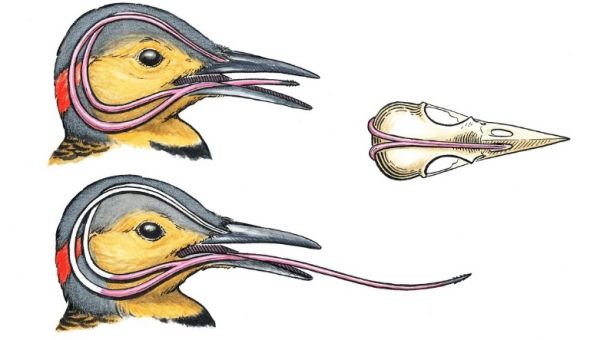Amara is a young southern white rhinoceros at Knowsley Safari in Prescot, UK. She's just under two years old and was noticed to be limping earlier this year. Rest and pain medication didn't help, so the zoo consulted with veterinarians from the University of Liverpool. Scans revealed that Amara had a broken ulna and needed surgery. How do you perform this kind of surgery on a rhino? Very carefully. In fact, it had never been done before.
The university sent a team of ten large animal veterinarians to perform the five-hour surgery. But they had never operated on a rhinoceros -they specialize in horses. And who knows the amount of anesthesia to give a juvenile rhino that weighs 800 kilgrams (1,760 pounds)? But Amara came through the surgery just fine and her leg was fitted with a cast. She spent the next six months confined to a paddock with her mother, but now the cast has been removed. Veterinarians will continue to monitor the condition of Amara's leg, but she is doing well and back to playing with the other rhinos in the park. Click to the right on the image above to see Amara.
A dairy cow named Aria is appalled by the behavior of a distracted and incompetent barn hand who not only treats the cows like objects, but also wastes their milk. This young man needs a lesson in respect. So they sit him down and Aria performs a song written by Howard Ashman and Alan Menken, who composed the music for Little Shop of Horrors, Beauty and the Beast, and The Little Mermaid, among other productions. "Aria for a Cow" was composed for Sesame Street, but was never used for the show. In this short it is sung with spirit by Kate Pazakis Gonzalez. The short has a 100% rating on Rotten Tomatoes. -via Metafilter

The fossil remains of an archaeopteryx were first discovered in 1861. It had feathers, so it was classified as a bird, the first bird, actually. But in the last 20 years, we've found an awful lot of dinosaurs of all kinds that had feathers, even dinos that weren't anywhere near related to each other. We know feathers help birds fly, but dinosaurs didn't fly (pterosaurs are not classified as dinosaurs) or so we thought. So why did dinosaurs develop feathers?
Dinosaur feathers came in all shapes and sizes, from tiny fuzz to plumes to brushy spikes. They also came in a range of colors. Some dinos had both scales and feathers, and a few were capable of flight. Yes, recent discoveries have found a couple of non-avian dinosaurs that could fly with their feathers. That sounds contradictory but "avian" in this case doesn't mean flight, it means the dinosaur line that evolved into birds. Each species had their own reasons for growing feathers, from warmth to camouflage to mating displays, or a combination of ways to use feathers. Read about some of these remarkable dinosaurs and what we've learned from them at Smithsonian.
(Image credit: Lucas-Attwell)
Who knew the Bee Gees could rock so hard? The latest mashup from Bill McClintock (previously at Neatorama) is titled "You Make Me Feel Like Stayin' a Rocket Queen." It combines the Guns N' Roses song "Rocket Queen" with "Stayin' Alive" by the Bee Gees and "You Make Me Feel Like Dancin'" from Leo Sayer, although Sayer doesn't show up substantially until the song is half over -although I may have missed something in all that falsetto. As McClintock often does, he sneaks in cameos from other artists for guitar solos, like Jimi Hendrix and White Zombie in this song. He's spent years proving to us that rock and disco go together like peas and carrots, as well as other music genres. While his mashups might make you laugh or make you wallow in nostalgia, they also remind us that a good song is good no matter how you categorize it.
YouTuber @CallDuckOfficial loves call ducks, which are a specific breed and, as far as I can tell, the most adorable breed. Chip and Clover live fun and pampered lives with their human, who gives them all of the comforts that an anatine companion could yearn for.
Nonetheless, Chip the duck is ungrateful and sometimes harasses his human. In this case, he prevents the human from tying his shoes.
-via Laughing Squid

You might not recognize the name Götz von Berlichingen, but he left his mark on history forever by coining the phrase "kiss my ass." That in itself is quite a legacy, but there was much more to the 15th-century German knight. In his 47-year military career, von Berlichingen fought for the Holy Roman Emperor, then against him, then for him again. He earned the nickname "Germany's Robin Hood" when he led a peasant's revolt and the nickname "Iron Hand" when he lost his right arm early in his career and replaced it with a metal prosthetic.
Götz von Berlichingen felt at home fighting and leading armies. At age 20, he retired from regular military service after several years and then raised his own army of mercenaries. They fought for whoever hired them for many years. Later in life, von Berlichingen lent his service to underdogs fighting for their freedom from oppression. He made a couple of attempts to retire that didn't stick, because von Berlichingen was born to fight. When he finally did and wrote an account of his life, it became a best seller and a play by Goethe. Read about the toughest knight of the Middle Ages at Military History Now. -via Strange Company
In 1994, Gloria Ramirez was suffering from late stage cervical cancer and went to a hospital for help. Staffers noticed odd odors emanating from Ramirez, especially when her skin was pierced by IVs or hypodermic needles. Her caregivers, other patients, and hospital employees immediately began to shows signs of a mysterious disease or possibly poisoning. These serious illnesses were quickly connected with Ramirez, but what was it? Was it the drugs she was taking to treat her cancer? Some strange chemical reaction in her body? Had she been poisoned herself? And how could she had survived even her short hospital visit with such dangerous toxins? Some have proposed that the symptoms other people experienced could have been a case of mass hysteria. Despite one of the most thorough medical investigations in US history, the case remains inconclusive, although there are several possible explanations. If the case sounds a little familiar even if you don't remember when it made the news, that may be because it inspired episodes in several TV shows.

Wolfgang Amadeus Mozart (1756-1791) was marked as a musical genius from early childhood. Over the course of his life, he wrote over six hundred pieces that survive to this day. Now we can add one more composition to that list. The Guardian reports that the staff of the city libraries of Leipzig, Germany, have found a previously-unknown work.
Mozart probably composed the piece in late childhood. It has seven small movements for a string trio and, when played, lasts about twelve minutes. The manuscript is likely to be a copy of the original and dates to about 1780, fifteen years after the original was written. Scholars have titled it Ganz kleine Nachtmusik.
-via Ted Gioia | Image: Royal Opera House Convenant Garden

Once the groceries are purchased, people tend to disregard their shopping lists and leave them in shopping carts or parking lots. Or they may save them and contribute their lists to The Grocery List Collection, which has almost 4,000 of them now. Bill Keaggy founded the site in the year 2000 after becoming fascinated with other people's discarded lists that he found, and now he has a book, an album about groceries, and templates for your future grocery lists. But the real fun is looking through the collection to see what other people wrote down to remember what to buy.

They are jotted down on notebook paper, old receipts, envelopes, stationary, post-it notes, and a variety of scraps -even a dollar bill or two! The lists are a glimpse into a stranger's life, and their lack of spelling ability. It appears no one can spell mayonnaise, yoghurt, or even bananas. -via Messy Nessy Chic
I saw this and thought, "What's a tilt coaster?" That question is answered early in this video mockup when the track seems to break, and then just goes vertical before the roller coaster is, um, dropped onto the course. The new Siren's Curse roller coaster was just announced today, and will be opening sometime in 2025 at Cedar Point amusement park in Sandusky, Ohio. It is only the world's second tilt coaster, the other being Gravity Max at Discovery World in Taichung, Taiwan. Siren's Curse will feature a 90-degree drop, two full gravity rolls, 13 weightless airtime moments, and a speed of up to 58 miles per hour. Fans are happy that Cedar Point is offering this coaster without removing any of the existing rides. We hope it will undergo thorough testing before opening. Still, no matter how safe it is, that's a big nope from me. -via Digg

Being the first modern democracy, the United States ended up with some weird kinks in our governmental framework. Sure, we can change the Constitution, but we have so many people now that it's hard to get them to agree on anything. The battle between Andrew Jackson and John Quincy Adams shows how the best laid plans of our Founding Fathers can go wrong.
One of the reasons we only have two major political parties is that you can't get to the 50% "magic number" of electoral votes when there are more than two major candidates. In the election of 1824, there were four presidential candidates who got a substantial number of votes, although they were strangely all from the same party. Andrew Jackson got more votes than any of them, and more electoral votes, too, but he didn't reach the then-required 131 electoral college votes. So the election was thrown into Congress. When the dust settled, John Quincy Adams was declared president. How did that happen? Mental Floss explains the shenanigans that went on behind the scenes of the election of 1824.
When I started school in the 1960s, the two first grade classes were part of an experiment. Class A, which I was in, learned to read by the phonics method. Class B was taught by the whole word method, or cuing as its called in this video, but we knew it as the block reading method. When the students talked about what we were learning, I couldn't wrap my head around learning whole words at a time just by looking at them. The two classes were kept separate until the 7th grade. I don't know what the findings were, because I was well out of school before I learned of the experiment. But all the top students in high school were from Class A.
Dr. Erica Brozovsky (previously at Neatorama) looks at both these methods of learning to read, where they came from, how they differ, and how they are turning out all these years later. Which method was used when you were taught to read?

Up until the 20th century, women kept their legs hidden under long skirts. Often they also hid the shape of their legs with wide, flowing skirts. Even showing a hint of ankle was scandalous. Then the flappers of the Roaring '20s declared their freedom by wearing skirts they could dance in, and the 1960s saw hemlines soar above the knees with the miniskirt.
It was no coincidence that miniskirts came with Baby Boomers, the Pill, and second-wave feminism. The freedom to show one's legs was just one of the many freedoms young people in the 1960s wanted to assert. While young people loved the miniskirt, others were scandalized, but the fashion was just one more thing to bemoan about a younger generation that was full of things to bemoan. And while the trend of miniskirts eventually died down, if not out, it wasn't just a matter of hemline height that did them in. Read about the rise and fall, so to speak, of the miniskirt at The Saturday Evening Post. -via Damn Interesting
(Image credit: Ed Uthman)
We've featured a lot of a cappella covers of pop songs here at Neatorama. We've featured a lot of bluegrass covers. We've also highlighted yodeling when the mood strikes. But in this strange, fascinating, and rather short video we have all of that, when the Spooky Men's Chorale performs Queen's operatic rock anthem "Bohemian Rhapsody." They say they always try to do something surprising to end their shows, and this time they raised the bar pretty high. This being a chorale with no instrumets, it's a bit shorter than the original- no guitar solo. The Australian group has been together more than 20 years, but has yet to play in the US. We may need to do something about that. Meanwhile, you can check out their range and their sense of humor at their YouTube channel. This performance was recorded at Fairport Convention’s Cropedy Festival last month. -via Laughing Squid

Have you ever thought about a woodpecker's tongue? We know woodpeckers by their hard beaks that they ram against trees (and houses and even metal siding) like jackhammers. They do that to find the ants and other insects living in those trees, which make up their diet. A woodpecker's tongue is very long, made to reach in and extract those insects, extending up to four inches past the tip of its beak.
But that's not the only thing a woodpecker's tongue does. It also works as a seat belt of sorts to cushion and stabilize the bird's brain while it violently pecks wood. The tongue actually wraps around the brain inside the woodpecker's head! The tongue is anchored to the hyoid bone, just like in humans, but a woodpecker's hyoid bone is in its upper beak near the nostrils and pointed backwards. The tongue wraps around the back of the brain inside the skull and finally emerges out of the mouth. You can see a video of a woodpecker's tongue in action at Boing Boing, but you won't see inside the bird's head. You will see a woodpecker's hyoid bone at work if you look closely at a previous video.
(Image credit: Denise Takahashi/American Bird Conservancy)




